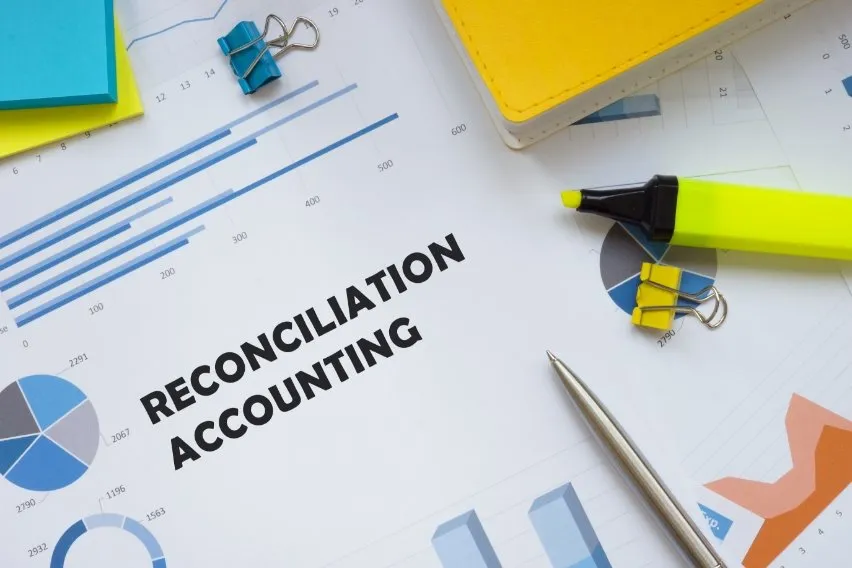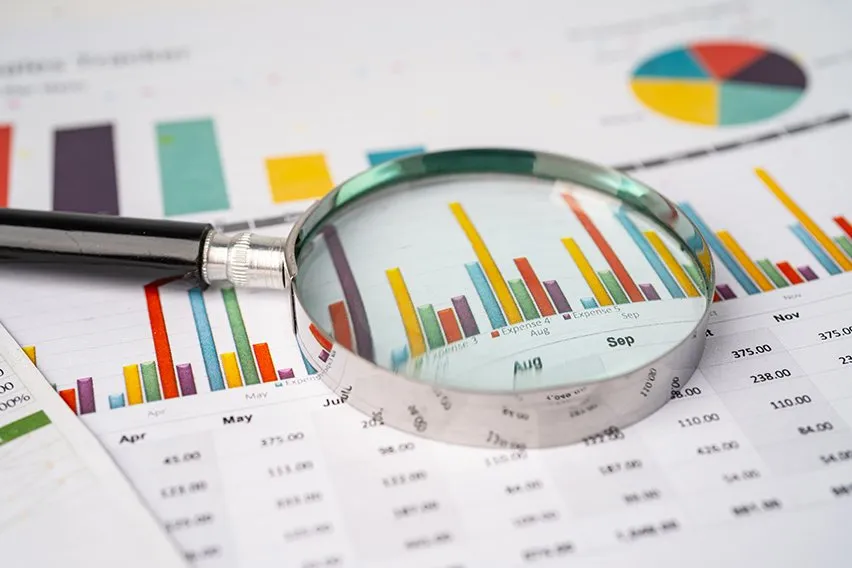What is Turnover in Business? Importance & Calculation

Understanding turnover is important no matter the industry you’re in. The concept will allow you to understand how your business does when it comes to conducting operations and selling services.
There is a specific method used to calculate turnover, which we will detail below. We will also look at several different types of turnover and discuss the differences between turnover and profit. Read on to learn everything you need to know!
Table of Contents
Why Is Business Turnover Important?
How to Calculate Business Turnover
Turnover vs. Profit – What’s the Difference?
What Is Turnover in Business?
“Turnover” is an accounting term that refers specifically to the total sales made by a business over a particular period. This amount—the turnover—will appear on an income statement. Some people also call this “income” or “gross revenue”. Turnover differs from profit, which is a measure of earnings.
In business, turnover is an accounting notion. It works out how fast a company conducts its operations. More often than not, the term helps to understand how fast a business collects cash from accounts receivable. It also measures how quickly a company sells its inventory.
There are several other possible definitions of turnover too. Some don’t always correlate directly with a company’s finances. Find out more about these too and how to calculate business turnover as we focus on this important accounting measure.
Why Is Business Turnover Important?
Knowing what your business’s turnover is will help with planning and securing investments. It’s also important for measuring performance and will play a part in valuing your company if you plan to sell.
It’s crucial that business owners and company managers understand their turnover. This is chiefly so they can decide what measures they might need to introduce to meet their target profit.
Let’s say your gross profit is low in comparison to your turnover. You might need to consider ways to reduce the cost of your sales. That could be by renegotiating contracts with suppliers, for instance.
Your net profit is low as a proportion of your turnover. You might then want to come up with ways to make your business more efficient. You might do so by reducing administrative costs.
You might also make your business more efficient if you begin relying more on technological advances. You should also be certain that you’re claiming all your business’s allowable expenses.
Late payments can be an issue for many businesses, especially smaller ones. If clients don’t settle up with you in a timely fashion, your annual turnover or profit might be less than you expected. Reminders are vital.
How Do You Calculate Business Turnover?
The mechanism to work out business turnover is fairly straightforward. All businesses need to keep accurate records for tax purposes. Doing so will make adding up your total sales a relatively fast process.
Keep in mind that turnover gets measured over a particular period. For example, this period might be during a tax year from March 1 until the end of February.
Here’s a simple example:
Total Sales or Turnover——————-500,000 ZAR
Cost of Goods Sold————————200,000 ZAR
Gross Profit———————————–300,000 ZAR
Operating Expenses———————–150,000 ZAR
Net Profit—————————————150,000 ZAR
To calculate gross profit, deduct the cost of your sales from your turnover. To calculate net profit, work out your gross profit and take away all other expenses including your tax liabilities.
Types of Turnover
“Turnover” can take on a number of meanings other than the total figure of sales over a set period. For instance, you might use the term “turnover” to refer to the number of workers that leave a company within a specific period. Some people also call this the “employee churn rate”.
Let’s take a look at some other common turnover terms that you’ll hear in the business world.
Accounts Receivable Turnover
Accounts receivable refers to the total figure in ZAR of invoices at any given moment that customers have not yet paid.
Let’s assume sales do not get settled in cash straightaway. The way to work out the turnover is:
Credit sales divided by average accounts receivable.
The latter is the average of the start and end accounts receivable balances for a set period of time. For instance, this time might be 1 year.
This formula tells you how fast you are collecting payments when compared to your credit sales. For example, let’s say credit sales for the month amount to 600,000 ZAR and the account receivable balance is 100,000 ZAR. The turnover rate is 6. The aim is to maximise sales and minimise the receivable balance, thus generating a large turnover rate.
In the same way, accounts payable turnover or sales divided by average payables is a measure of cash flow. It works out to the rate a business pays back its suppliers and vendors.
Inventory Turnover
Business leaders also use the term “turnover” to refer to how often their inventory or stock gets replaced. A low inventory turnover means sales might be sluggish. On the other hand, a high inventory turnover might imply a strong sales performance.
You would work out the inventory by dividing the cost of goods sold (COGS) by average inventory. This process is similar to the above formula we used for accounts receivable.
Inventory turnover—also known as sales turnover—assists investors in working out risk. The level of risk would be what they would face if they provided operating capital to a company.
Portfolio Turnover
The term “turnover” also gets used in the investment world.
For example, a mutual fund might have 200 million ZAR in assets under management. The portfolio manager could sell 40 million ZAR in securities throughout a particular year. If so, the rate of turnover would be 40 million divided by 200 million.
A 20 per cent portfolio turnover ratio could infer that the value of the trades represented a fifth of the assets in the fund. Investors often consider funds with excessive turnover to be of low quality.
Asset Turnover
A company’s asset turnover ratio tells you how good a company is at generating revenue from its assets in a given year. To find this ratio, start by taking your annual sales total.
Next, divide it by the sum of assets at the start of the year together with assets at the end of the year. Then divide that figure by 2.
Investors often take note of the asset turnover ratio to make comparisons with similar companies in the same industry.
Working Capital Turnover
This kind of turnover measures how effective a business is at generating sales. It accounts for all the ZAR of working capital a company puts to use.
Working capital means the difference between a company’s current assets and its current liabilities.
Turnover Tax
This is a simplified tax system for micro businesses in South Africa. Its goal is to make their lives less difficult when meeting their tax obligations.
The turnover tax system replaces other kinds of taxes. These include VAT for micro-businesses with an annual turnover of 1 million ZAR or less.
Example of Business Turnover
For companies that are selling goods, the ZAR value of their sales is their turnover. For those offering services, you’d consider the total amount charged as turnover.
So, if a company’s annual sales or services charged came to 100,000 ZAR, that would be its turnover. It is therefore essential that all businesses keep detailed and accurate records. This way, a business will know how much it is selling at any given moment.
A company’s business turnover tells only part of the story. Still, once you have calculated it you can start to work out any potential profit.
Turnover vs. Profit – What’s the Difference?
Turnover in business is not the same as profit. It’s quite common for some people to confuse them. Put simply:
- Turnover is your total business income over a set period of time (i.e., the net sales figure)
- Profit refers to the earnings that remain after you’ve deducted expenses
Keep in mind that there are 2 separate ways you can measure profit.
“Gross profit” refers to sales less the cost of the goods or services you sell. You might also refer to this as the “sales margin”.
“Net profit” is the figure that’s left over during a particular period after you’ve deducted all expenses like administration costs and taxes.
Key Takeaways
Turnover in business can refer to a variety of different measurements. In its broadest sense, a company’s annual turnover equates to its total sales figure. Turnover is not the same as profit.
Taken alone, a company’s annual turnover does not tell you much about how successful or profitable it is. However, it does allow you to begin painting a picture of a company’s profit when coupled with other figures.
Turnover is a term also used in specific areas of business such as staff churn. Accounts receivable and inventory turnovers are other types of common turnover. All these types of turnover are measurements that help determine a company’s success in specific areas.
Turnover can provide a partial indication of how well a business might be doing.
FAQs on Turnover
What Is Turnover in Simple Terms?
Turnover is a measurement used in business that gives an indication of a company’s performance in a specific area. Turnover often equates to the sum of a company’s sales. This is the most common use of the term “turnover” in business. The term also refers to a measure for portfolios, inventories, and accounts receivable.
What Does Annual Turnover Mean?
Annual turnover refers to the sum total of a company’s sales before any deductions (such as taxes or operating costs). You should not confuse turnover with profit.
What Is a Good Turnover Rate?
A good turnover rate would be one that can generate a decent profit. The turnover figure needs to be high enough so that when costs and taxes get deducted from it, there is a healthy profit left.
It is possible to have a turnover rate that appears very high. But that might not correlate to high profit. The best turnover rates will generate more profit for a business once all expenses get stripped away.
RELATED ARTICLES



 What is Reconciliation in Accounting?
What is Reconciliation in Accounting? Top 5 Free Accounting Software for South Africa
Top 5 Free Accounting Software for South Africa Drawings in Accounting: Definition, Process & Importance
Drawings in Accounting: Definition, Process & Importance Source Documents in Accounting: Definition, Importance & Types
Source Documents in Accounting: Definition, Importance & Types Cash Receipts Journal: Definition, Types, Pros & Cons
Cash Receipts Journal: Definition, Types, Pros & Cons What Is a Nominal Account? Definition & Example
What Is a Nominal Account? Definition & Example